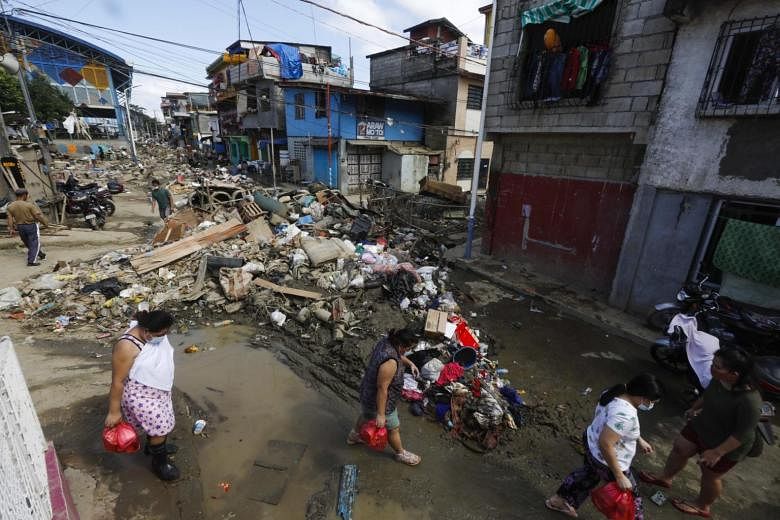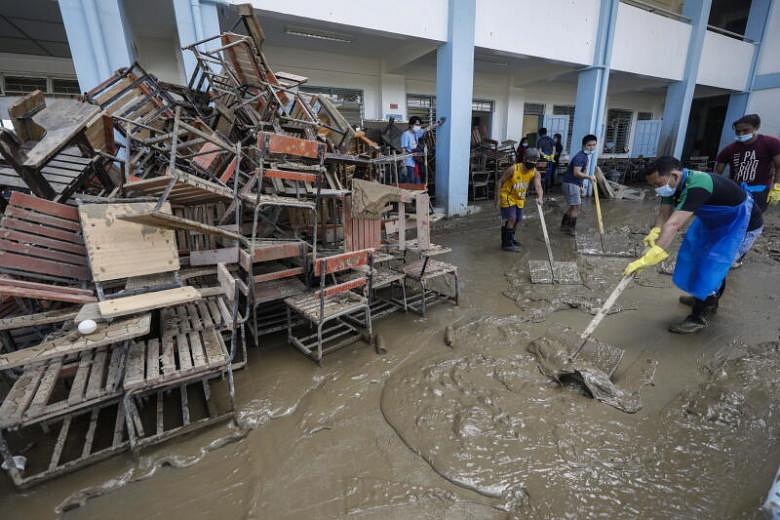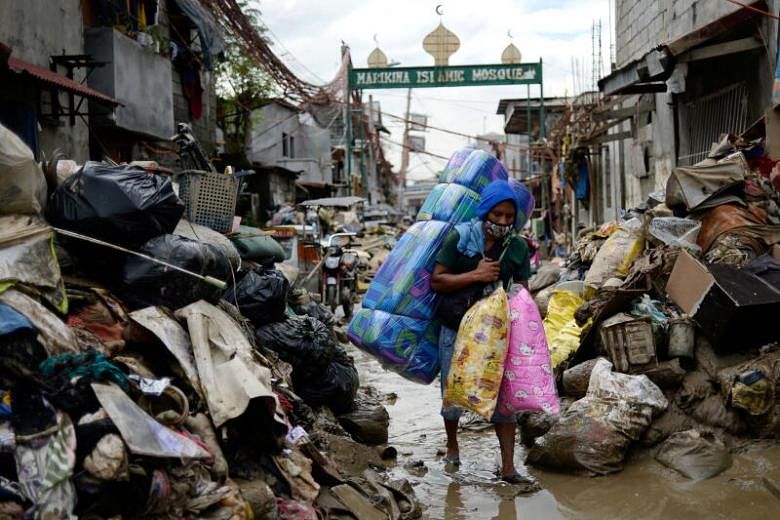SINGAPORE - In a matter of hours, swathes of the main Philippine island of Luzon were flooded by record rains from Typhoon Vamco.
Rivers burst their banks, landslides smashed into villages and rice fields were flattened. Much of Manila was inundated by muddy water that quickly reached the rooftops of homes in some areas.
It is now just over a week since Vamco struck with unexpected ferocity, leaving many in the affected areas the painful task of cleaning up, rebuilding and mourning lost loved ones. The recovery for many has only just started.
The storm killed 73 people and affected nearly four million others, according to the latest update from the National Disaster Risk Reduction and Management Council (NDRRMC) published on Sunday (Nov 22).
Vamco is the 21st storm to hit the Philippines this year and quickly followed Typhoon Goni, which was ranked among the strongest typhoons to hit the Philippines in years, with winds exceeding 300kmh. Goni left at least 26 dead and displaced close to a million.
The Philippines is used to typhoons. But this year, the season has been especially active, with Vietnam also being hit by a series of devastating storms.
The typhoon season usually starts in June and peters out by November. But in recent years, the strongest typhoons have been slamming the country as the year draws to a close in November and December.
Typhoon Haiyan, which struck the central Philippines in November 2013, left 7,300 people dead and missing.
Vamco, which quickly gathered strength as it approached Luzon, dumped record levels of rain that paralysed nearly all of Metropolitan Manila on Nov 12.
Dramatic rescues played out across several cities in the capital region, with tens of thousands rescued by rubber dinghies, small motorised boats, canoes and even jet skis, Reuters reported at the time.
In Marikina city and the nearby Rizal province, home to nearly three million, residents fled to the upper floors of their homes or climbed onto rooftops as flood waters rose rapidly after a 78km river breached its banks.

Trees, electric poles and a myriad of debris were strewn across streets in Manila, home to 13 million people. Key highways were impassable, while close to four million people suffered through a prolonged blackout, Reuters said.
In Cagayan province, at the very northern tip of Luzon, Vamco turned the once picturesque Cagayan River into a sea of murky brown, killing dozens and setting off deadly landslides.
-
The Singapore Red Cross (SRC) has launched a public fundraising appeal for people affected by recent typhoons that have swept across South-east Asia.
-
On Nov 20, the SRC announced it will contribute an additional USD200,000 to support affected communities in Cambodia, Laos, the Philippines and Vietnam.
-
The Singapore Government contributed US$200,000 as seed money for the appeal.
This comes on the back of SRC's earlier contributions of SGD50,000 to support Super Typhoon Goni disaster relief efforts by the Philippine Red Cross; and USD75,000 for disaster relief by Cambodian Red Cross, Lao Red Cross and Viet Nam Red Cross.
-
To make a donation:
Online donation or PayNow to UEN S86CC0370EGEN
Cheque donation - Please make cheque payable to 'Singapore Red Cross Society' and mail to Singapore Red Cross Society, 15 Penang Lane Singapore 238486. Please leave your name, postal address and indicate "Southeast Asia Floods 2020" at the back of your cheque.
Days after the storm, Mr Francisco Pagulayan, 45, sat dazed as he stared at three white coffins on the roadside near his village. Two of his seven children - Ian, 17, and Frank, 19 - along with his mother-in-law, Virginia Bautista, were killed when a landslide buried their modest wooden home, the New York Times reported.
"There was a loud boom, and within seconds everything was gone," said Mr Pagulayan, who lives in Baggao, a village in Cagayan province. "They survived the flash flood but were buried by the landslide."

The NDRRMC estimates Vamco caused 8.7 billion pesos (S$242 million) in damage to infrastructure and 4.21 billion pesos in damage to agriculture.
Nearly 140,000 people are still being looked after in 723 evacuation centres, the council said in its update.
Singapore aid agency Mercy Relief has launched a fund-raising appeal for victims of recent storms and floods in South-east Asia. The appeal runs until Dec 10.






